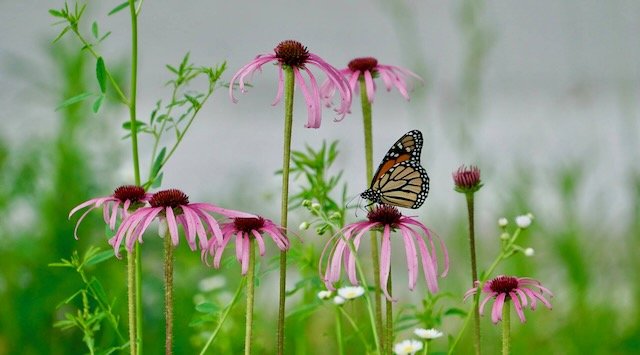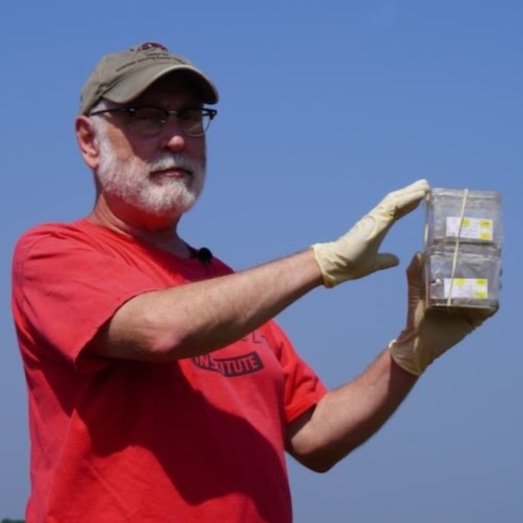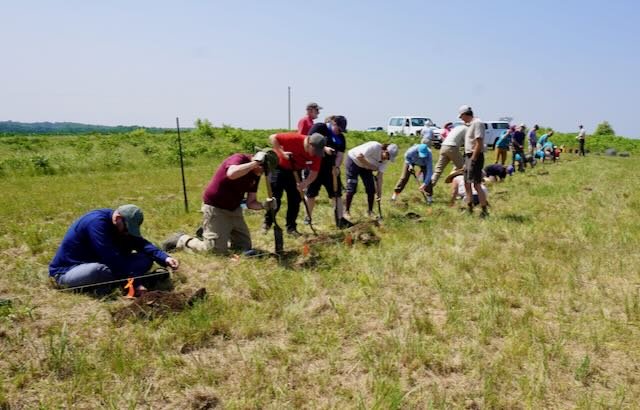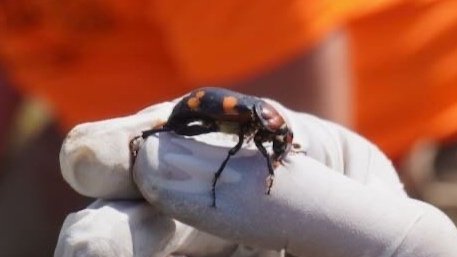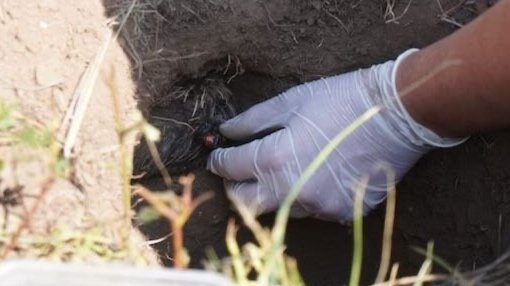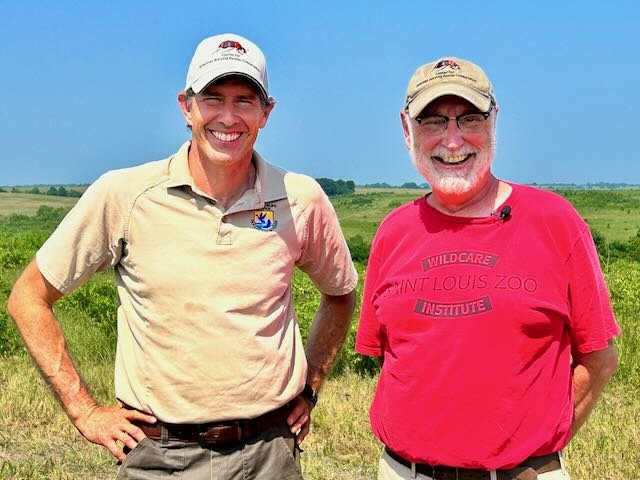The American Burying Beetle, scientifically known as Nicrophorus americanus, is a remarkable beetle with a distinct ecological role and captivating life cycle behaviors. These beetles used to be widespread across the United States. Sadly, their population has significantly dwindled over time due to several factors, such as habitat loss, pesticide use, and a scarcity of carrion. Included above is a photo of this fascinating beetle, courtesy of the Missouri Department of Conservation.
Amidst sweltering heat and with shovels in hand, a group of volunteer conservation enthusiasts gathered at Taberville Prairie Conservation Area on June 20th. The air was thick with excitement as we embarked on a unique mission, joining forces with the St. Louis Zoo, US Fish & Wildlife Service, and MO Department of Conservation. What could possibly motivate us to dig holes in rock-hard dirt on such a scorching day? The answer lies in the reintroduction of a captivating and critically endangered creature—the American Burying Beetle.This beetle lived up to the hype of its impressive size and striking appearance. Measuring an average of 1.25” long, these beetles have black bodies with strikingly bright red-orange markings. What makes them so cool is their specialization on carrion! The American Burying Beetle searches out dead animal carcasses. They forage, reproduce, and conduct their burial behaviors at night. By burying decaying animals, they play a critical role in our ecosystems, reducing disease exposure, and facilitating nutrient recycling in the soil.Yet, they don’t just feed on dead animals, they save them for a special purpose! Upon discovering a small vertebrate carcass, such as a bird or a rodent, a beetle will send out pheromones to attract a mate, and together they will bury the dead animal. Their burial act provides stored food for their future larvae while keeping it hidden from competing scavengers. What do American Burying Beetles do after mating? First they prepare the carcass by stripping away feathers or fur, treat it with antimicrobial secretions to prevent decay, and then feed their offspring as they develop into larvae. These insects raise offspring with uncommon parental care!Partnering with the U.S. Fish & Wildlife Service, the Missouri Department of Conservation, and The Nature Conservancy, the St Louis Zoo staff, originally helped survey the state for this declining species. None were found.Bob Merz, Assistant Director of the St. Louis Zoo established a captive breeding program that would ensure genetically diverse, healthy populations. Once breeding proved successful, his staff collaborated with conservation partners to reintroduce beetles strategically at suitable prairie sites. To date, there have been both successes and setbacks to learn from.Undoubtedly the American Burying Beetle is a remarkable creature with a striking appearance, intriguing behaviors, and a crucial ecological role. Their conservation story inspires awareness, support, and cautious optimism for the recovery of endangered species and biodiversity as a whole. We, volunteers, are proud to be part of their story.To learn more about this fascinating beetle, click on these links:
https://mdc.mo.gov/discover-nature/field-guide/american-burying-beetle
https://www.youtube.com/live/y4j4pC68cnk?feature=share
Article and photos by Amera Wild, member of the Missouri Master Naturalist, Chert Glades Chapter
